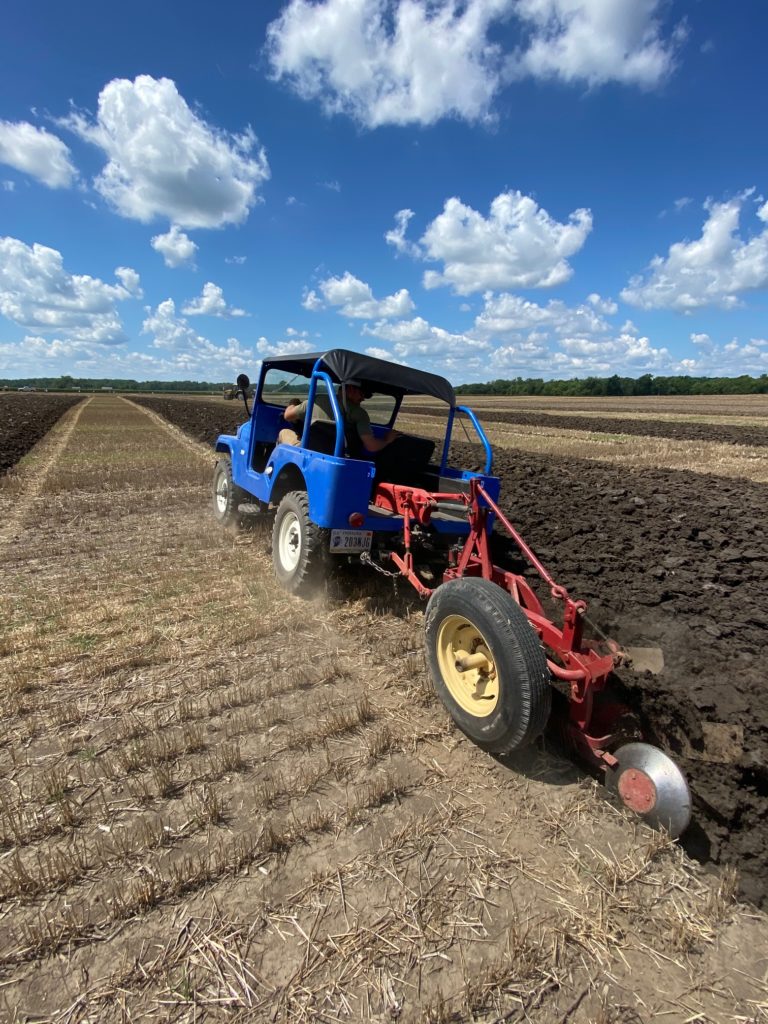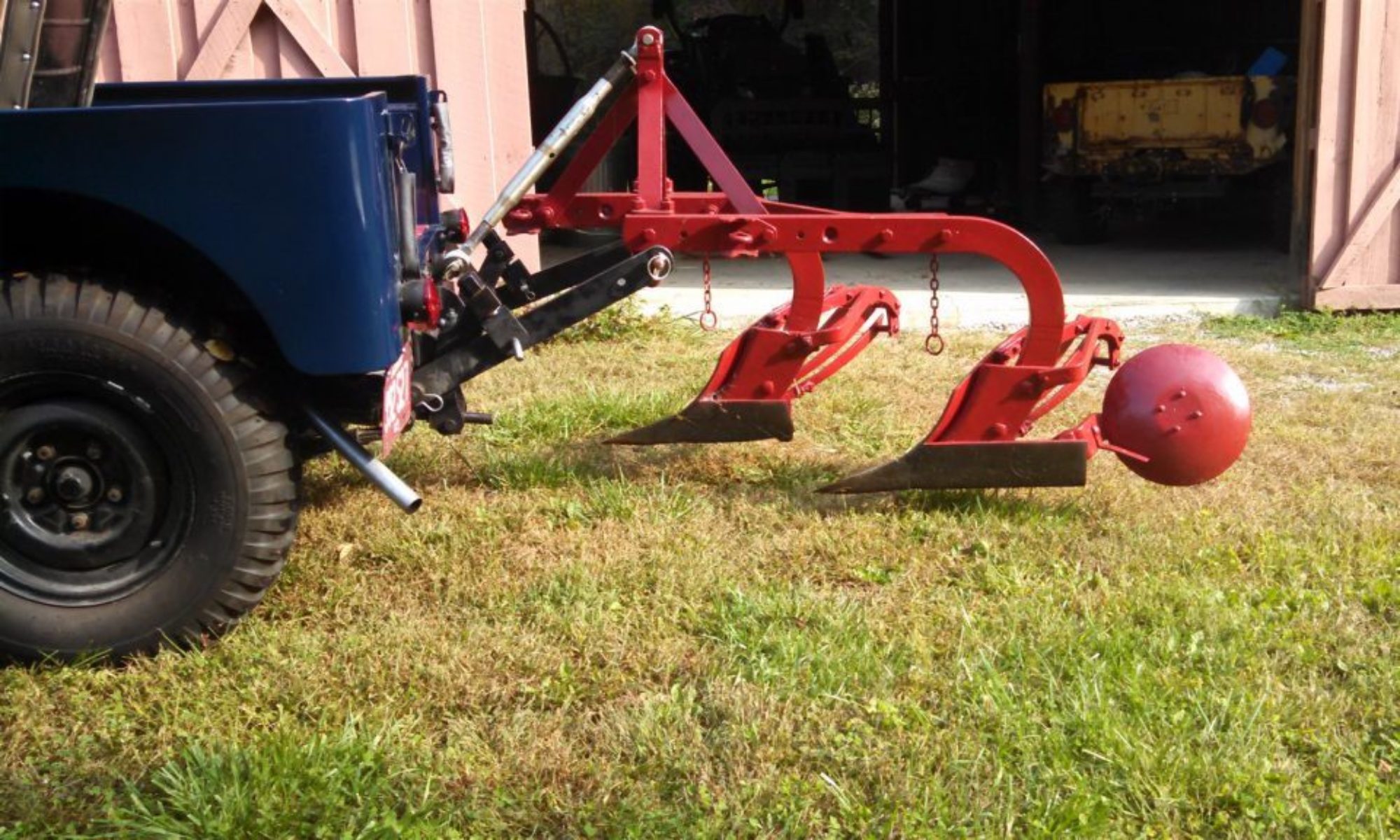“Every farm boy remembers the thrill of the first time he ever plowed a furrow — but I’m telling you, it has nothing on the thrill you get the first time you touch the control lever on your Jeep that drops your plow and you turn your opening furrow on a cushioned seat!”

The quote above is from the movie “Workhorses of the Farm” and we have written about how people couldn’t visualize the Jeep as a tractor until we hooked a plow on the back. When we met David Linebaugh (read his story here) at the 2021 Willys Rally and learned of his Jeep’s plowing contest performance, we thought it time to address the Jeep as a plow tractor.
Learning to plow with a Jeep
Plowing with the Jeep was a critical farming activity. Testing of the military jeep as a farm vehicle began as early as 1942. Early testing was done with drawbar implements, specifically wheeled plows. The idea was that soldiers returning from the war could use the horse-drawn implements they had on hand. Soon after the introduction of the CJ2a, hydraulic lifts capable of using 3-point style plows added to the farmer’s options.
The 1948 Monroe Auto Equipment Company (MAECO) infomercial uses 15% of the film run time to demonstrate how to plow with the Jeep, the Monroe lift and Newgren plows. They used about the same amount of time discussing all the other farm implements available for the Jeep.
A number of early publications, including the CJ2a operations manual included detailed instructions on how to layout your fields for optimum plowing with the Jeep. At the same time publications and the 1954 “‘Jeep ‘ Family of 4 Wheel Drive Vehicles” movie proclaimed that “Anyone who can drive a car can plow with a Jeep!”
Hearing from a pro
We asked David to comment on several of the issues we have heard over the years. We peppered him with questions: How does the Jeep compare to other tractors you have plowed with? Was there a “learning curve” for plowing with the Jeep or was it like the ads said “Anyone who can drive a car can plow with a Jeep” Two major complaints were the lack of vision of the plow you have when seated on a tractor and the large turning radius (can’t quickly turn the Jeep around like you can a tractor at the end of field). Could you comment on those? Finally what is your favorite Jeep/plow combination, the one you like to use in the contest?
David answered our questions-
“Plowing with the Jeep has its challenges. You have to feel for the furrow in the steering wheel. And yes visibility is hindered and also traction is effected. The ground I plow mostly is clay and pulls hard so I have to run as shallow as possible. I have to watch how I finish the plot so I don’t dig too much then I can’t pull it. Most of the time I have plenty of room to turn around but yes I have had to make several point turn to get where I need to go.
I use a Cockshutt 1230 2-12 plow because it’s what I had available when I got the Jeep together and I’m also partial to Cockshutt equipment because that’s what I grew up with. I bought the Wiard plow because I seen some old advertising with that particular plow and the price was right. I need some time to get the Wiard plow to pull good behind the Jeep but is good for show at the moment. “
The CJ5 on a test dyno
In addition to entering plowing contests, David has tested the CJ5’s horsepower output on a dynamometer. He sent us the following note:
I ran the dyno on the belt pulley and also direct drive with the pto shaft. My horsepower results was 35 belt HP. But when I dynoed it with direct drive it only put out 31 HP. The only thing I could figured is that when I ran direct I had to be in 1st gear When I dynoed with the belt I ran 3rd gear and didn’t have to go through a reduction.
Putting that horsepower to work
In addition to dyno testing, many antique machinery shows provide opportunities to put tractor’s – and Jeep’s – belt power to work. David sent us this video of his CJ5 powering a threshing machine.
More information
If you would like more information on plowing contests, you can read the contest rules at USAPO Contest Rules.

